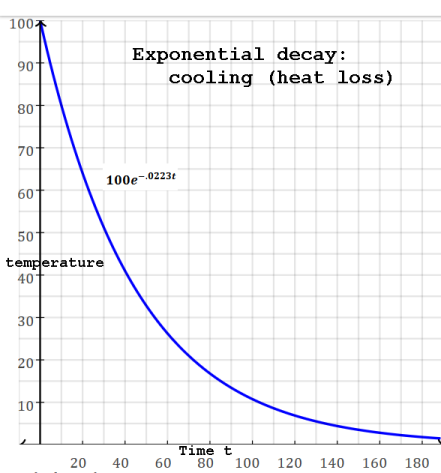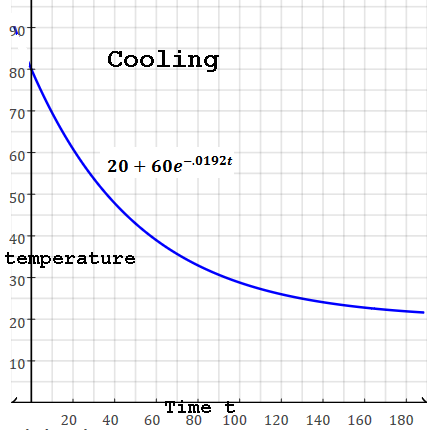The heat (energy) has a "half-life".

T(t)=Ta+(T0-Ta)e-kt
Newton's law of cooling.
Cooling (i.e. loss of energy as heat) of something is proportional to the difference between its
temperature and the ambient temperature (i.e. the temperature of its surroundings).
Say a kettle of 100° boiling water is taken off the stove and put into a
very large refrigerator/freezer that is at 0°. (and ocasionally stirred).
After 10 minutes the temperature of the water is measured to be 80°.
Ambient temperature: Ta=0
Temperature at time 0: T0: T(0)=100
Temperature at time m=10: Tm=T(10)=80
Temperature at time t: T(t)=Ta+(T0-Ta)e-tk
Temperature at time 10: T(10)=Ta+(T0-Ta)e-10k
Solving for k: 80=0+(100-0)e-10k k=.0223
T(t)=100e-.0223t
half-life: ln 2 = kt t=31.08
Time of the excess temperature to halve from any value is always the same.
(Excess temperature is T0-Ta)
The heat (energy) has a "half-life".

Another example: something hot at 80° placed into 20°.
After 15 minutes it is 65°.
T(15)=Ta+(T0-Ta)e-15k
Solving for k: 65=20+(80-20)e-15k k=.0192
T(t)=20+60e-.0192t
half-life: ln 2 = kt t=36.1
